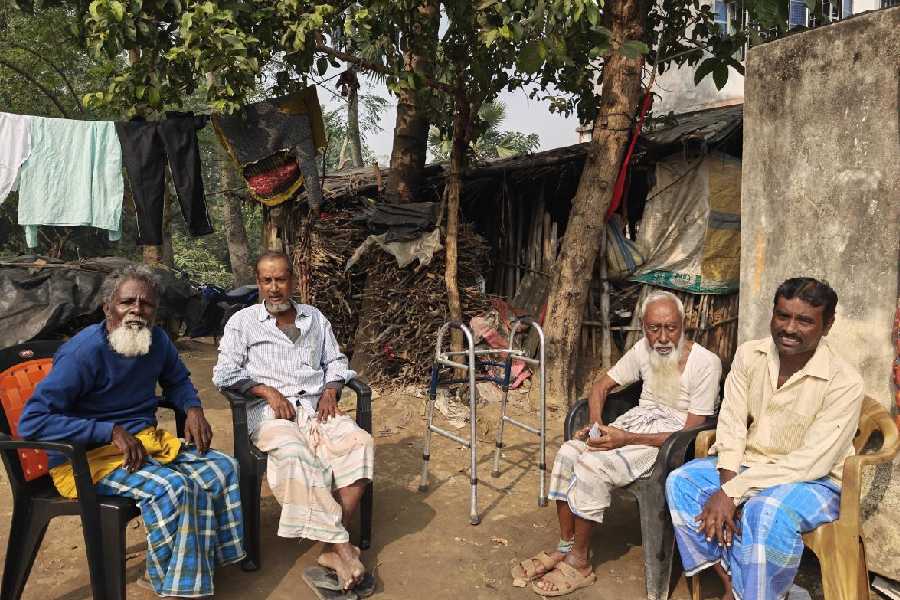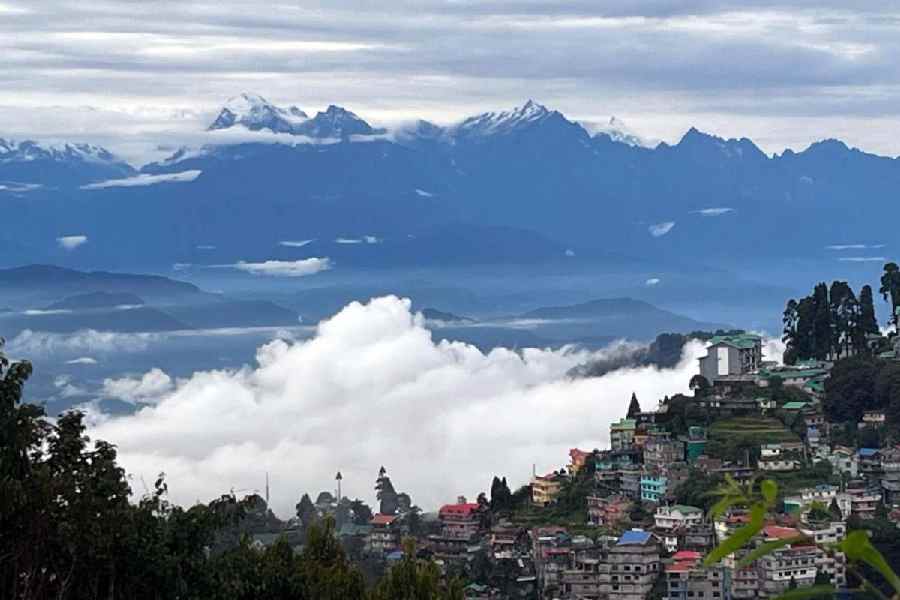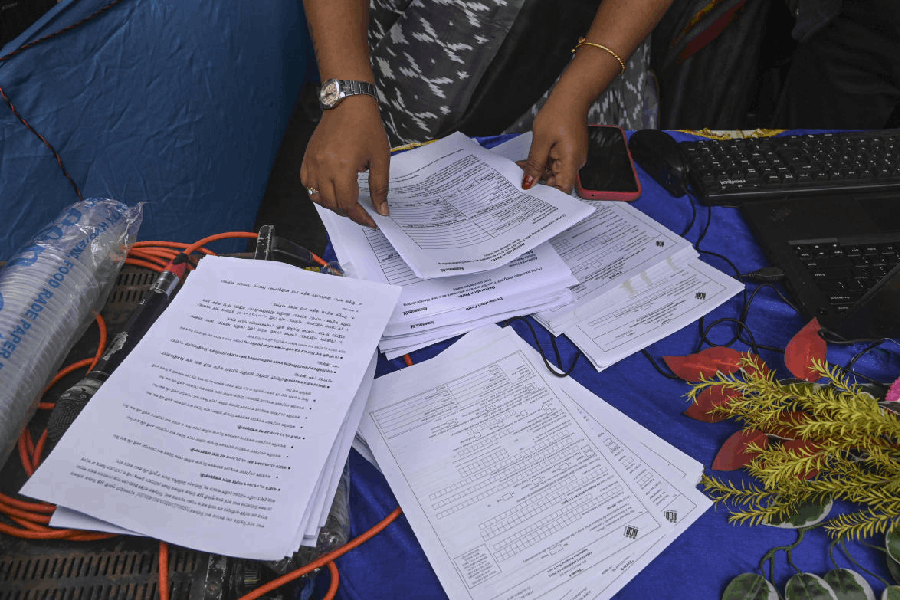A few exceptions notwithstanding, the success or otherwise of campaigns of political mobilisation is best gauged in hindsight. One of the most successful campaigns — with very far-reaching consequences — was undertaken by L.K. Advani in support of the construction of the Ram Janmabhoomi temple in 1990. The Ram temple rath yatra was envisaged as a journey from the reconstructed Somnath temple in Gujarat to the disputed Babri shrine in Ayodhya. Advani was, of course, arrested in Samastipur in Bihar and didn’t reach Ayodhya on this particular journey, but the rath yatra transformed the face of Indian politics dramatically and unleashed a socio-political movement that saw the Bharatiya Janata Party emerge as the principal alternative to the Congress.
The spectacular success of Advani’s rath yatra should have been apparent from the day ecstatic crowds greeted his motorcade all through Gujarat. However, in the days before television channels brought dollops of instant news to the consumer, it was a while before the transformative nature of the BJP campaign was digested by the political class and the intelligentsia. A casual perusal of contemporary newspapers, particularly those published in English, would reveal that the media was inclined to seriously discount the public impact of this innovative mass contact initiative. Indeed, till the general election of 1991 revealed the extent of the BJP’s electoral breakthrough, the inclination was to treat the rath yatra as an urban phenomenon whose emotional appeal was limited to the Hindu upper castes and the trading community.
It is instructive to keep the zigzag journey of received wisdom about the rath yatra in mind when attempting to assess the impact of the 3,570 kilometre or so of the Bharat Jodo foot journey of the Congress leader — he holds no other post in the party — Rahul Gandhi, from Kanyakumari in Tamil Nadu to Srinagar in Jammu and Kashmir. That it was an audacious initiative by a man whose political conduct had earlier been dismissed by both party loyalists and opponents as non-serious and lacking in application is undeniable. To his credit, Rahul stuck to his mission single-mindedly and didn’t allow frivolous issues, such as his disdain for warm clothes and his new, generous beard, to divert attention from the central thrust of his campaign.
Despite the pretension that Bharat Jodo was detached from the vagaries of electoral politics, it was apparent that the journey was planned with a distinctly political objective.
Part of its rationale was linked to the public perception of a man whose primary identity is that he is the son of Rajiv and Sonia Gandhi, the grandson of Indira Gandhi, and the great-grandson of Jawaharlal Nehru. Despite being a three-term member of the Lok Sabha, Rahul had not succeeded in acquiring an independent political profile. His conduct as a political functionary from the time Manmohan Singh was prime minister to the time he walked out in a huff from the Congress presidency after the debacle of 2019 was marked by bouts of purposeless over-earnestness and a multitude of gaffes that were taken to imply that he was either a little slow or politically innocent. His televised interview with Arnab Goswami in the run-up to the 2014 general election had an already demoralised Congress squirming in embarrassment.
On the Bharat Jodo Yatra, Rahul was infinitely better prepared. Whether this had anything to do with the Congress Rajya Sabha MP, Jairam Ramesh, assuming the role of tutor is a matter of detail that doesn’t distract from the professional choreography of the Yatra. By the end of the long march, the image of Rahul as a public-spirited individual concerned with aggressive assertions of religious identity had taken hold. There were few pronouncements on concrete issues of governance — Rahul fumbled when, in Kashmir, he was asked about the implications of the status quo ante — but the calculation was that this could await another time, nearer the 2024 parliamentary election.
For the moment, there is also unlikely to be a great Congress revival at the grassroots. The Yatra did certainly bring some cheer to a party that has been demoralised since the defeat of 2014 but the limited gains are likely to accrue in places — Kerala and Karnataka being the most obvious examples — where there is an organisation to harvest the excitement generated by the Yatra. As of now, northern and eastern India are far from witnessing a revival in the party’s electoral fortunes. The dismal state of a fractured state government in Rajasthan is also unlikely to see any improvement.
It would, however, be a mistake to see Rahul’s Yatra as a purely future investment. The photographs of a sometimes very tactile Gandhi scion walking with attractive film stars, intellectuals and celebrities from another era did the rounds of social media and were widely seen. Also important was the fleeting presence of Opposition leaders from the Left and regional parties in the march. Seen together, they aimed at conveying the message that nearly nine years of a formidable Narendra Modi government and sustained exclusion from political power haven’t been able to destroy the Congress’s once-formidable ecosystem. On the contrary, and despite many celebrated defections to the BJP camp, the presence of the likes of the former Reserve Bank of India governor, Raghuram Rajan, signalled that the Congress Establishment, while depleted, is still there and ready to bat for the party. Likewise, although the support extended by the anti-Narmada activist and Aam Aadmi Party candidate in Mumbai in 2014, Medha Patkar, may well have cost the Congress some votes in the Gujarat assembly election, her presence symbolised the fact that the beleaguered NGO sector will be there at the service of the Congress when required.
In organising a challenge to Modi and to the BJP for next year’s election, the Congress needs to do two things. First, it needs to re-establish its credentials as a natural leader of any anti-BJP alliance. The Yatra didn’t entirely succeed in this endeavour, but it managed to present a more wholesome picture of an alternative than the patchwork of regional parties. Second, the Congress has imposed an arm’s length relationship between the First Family and the party organisation. The Yatra re-established the importance of the First Family as the party’s most formidable national symbol. As to whether these little triumphs are good enough to beat Modi is another matter altogether.











